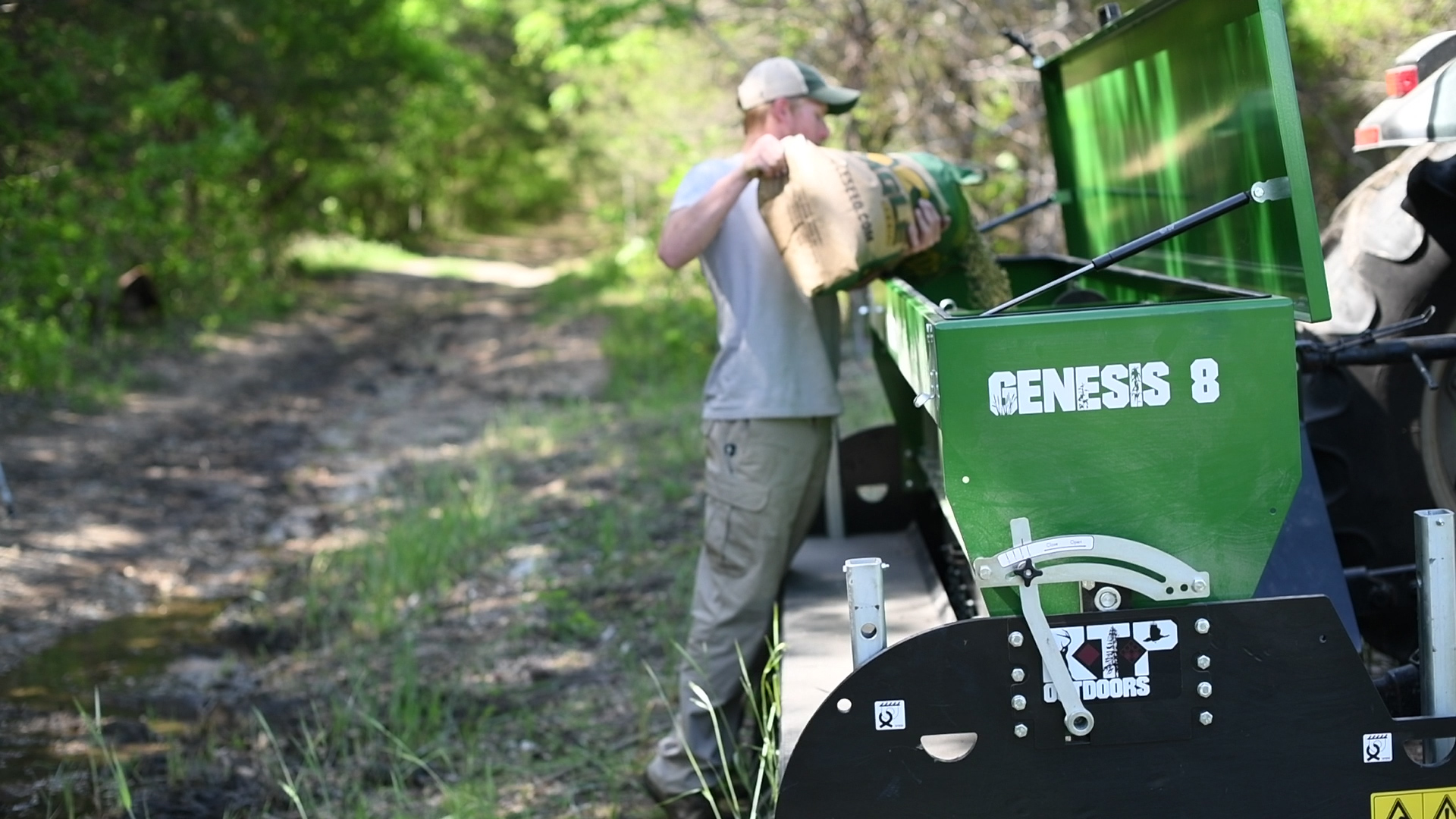Easy Tips For Planting Food Plots: Soil Moisture and Planting Depth
Filed under: Hunting Blog
After a long and wicked drought, it’s rained more than 3” recently at The Proving Grounds! This is very unusual for mid-August. The rain is a huge blessing because it’s time to plant the cool season (fall) food plots!
Most cool season food plot forage varieties do best when they are planted 45-60 days before the first average frost date during fall. It’s easy to find the average first frost date where you live by simply searching online. The source I use for Missouri is: http://climate.missouri.edu/news/arc/sep2009.php.
So, 60 days back from October 15th is August 15th. In addition to the number of days before the average first frost day of the fall, soil moisture is another factor that determines when conditions are best to plant. Seeds require soil moisture to germinate and get off to a good start. Seeds and seedlings that germinate when there’s barely enough soil moisture are stressed and research shows many such seedlings never express their full growth or quality potential.
After August 15th, I wait until there’s adequate soil moisture before planting. We use the Buffalo System to establish and maintain food plots. One of the principles of this soil health improvement system is to ensure the ground is always covered with both living and decaying and vegetation (mulch from previous crops). We never disc/plow and have minimal soil disturbance. This system conserves much more soil moisture than systems that include discing and/or plowing the soil. Therefore, using the Buffalo System requires much less precipitation to be productive! It’s like irrigating but much less expensive!

If there is adequate soil moisture, seeds will do great even when planted relatively shallow. We’ll be primarily planting Eagle Seeds Fall Buffalo Blend. This blend includes forage varieties with larger seeds and some with very small seeds. We’ll plant most of our plots with a Genesis no-till drill. The Genesis handles planting blends with all different sized seeds with no problems.
Since there’s currently a good amount of soil moisture, we’ll set the drill to plant the Fall Buffalo Blend about ¼” deep or just barely covered with soil. Given the amount of soil moisture and soil temperature, the seeds will germinate in just a few days and start putting down roots to find the best sources of moisture and nutrients.
If the conditions were drier, but there was adequate soil moisture a bit deeper we’d plant the Fall Buffalo Blend a tad deeper (1/2” to a max of 3/4″) so the young seedling roots would find moisture quicker. The larger seeds with more stored energy will bust through soil and allow the smaller seeds (with less stored energy) to emerge. This is possible because we plant at a higher seed density. We plant the Fall Buffalo Blend at 70 lbs per acre.
If the soil is dry and only small seeds are planted, such as clover, then some or all of the seeds might germinate and die before they break through the soil surface. If the plants can’t break through the soil surface, make leaves and start interacting with the sun (photosynthesizing) they will die.
Placing seeds too deep for the conditions is one of the most common planting mistakes I see. Whether you use a no-till drill, disc, or broadcast and cover, monitoring seed depth is one of the most important steps in establishing a new food plot crop.
Enjoy Creation,
Grant



